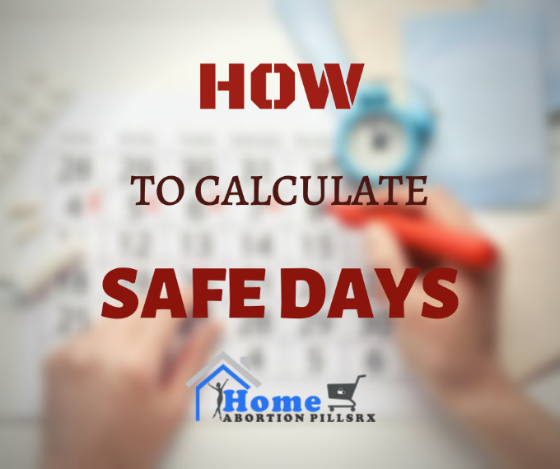How to calculate safe days to avoid unwanted pregnancy?

Realizing how to calculate safe days or infertile state may enable you to figure when to have a sexual activity to keep you away from unwanted pregnancy. Having safe sex during the protected period is a natural contraceptive, yet it is effectual just when you comprehend your menstrual cycle and precisely determine the safe and unsafe days. Some experts say that no assurance having sexual acts only during the protected period will prevent pregnancy, as the period cycle may vary, and a miscalculation may root to unplanned pregnancies.
In this blog, we give you a complete idea of how the safe days can be calculated and various techniques that you might try for it. At the same time, the use of contraceptives, while having sexual intercourse through the safe period, is more efficient in minimizing the odds of pregnancy.
Tracking the days when you are not fertile:
Monitoring your fertile period is a method to determine your best possible time to get pregnant. It can also help to avoid pregnancy if you are not trying to conceive. As a process of reliable birth control, it can take a few months of recording your monthly period cycle to comprehend your fertile period.
How to track fertility:
You can track your fertile period in the following method:
For eight months to a year, record the day you start your menstrual period and tally the complete number of days in that cycle. Remember that the 1st full-flow day of your menstruation is the first day.
After that, write down the greatest and shortest period of days from your month to month tracking.
Know the first day of your fertile cycle. Once you get the date, subtract eighteen days from the shortest period cycle. For instance, if your shortest period was 27 days, deduct 18 from 27, and record day 9.
Know the last day of your fertility window by deducting 11 from your period of the most sustained cycle. For instance, if it existed for 30 days, you’d get day 19.
The time between the shortest and longest day is your fertility period. In the above model, it would be within days 9 and 19. In case you’re attempting to stay away from pregnancy, you’d need to abstain from having unprotected sexual activity during those days.
Various other fertility awareness techniques:
Monitoring ovulation is an additional efficient fertility awareness method.
General ways to monitor ovulation comprise of;

Central body temperature; Your central body temperature is your temperature that your body has when you are entirely at rest. It slightly rises during ovulation. You can track your temperature using a normal body temperature thermometer. Using this thermometer, you need to record your body temperature when you initially wake up in the morning. You can note down the temperature on a paper or any app. Your body temperature will slightly rise to about 0.5°F at the time of ovulation. So this method will enable you to figure out when ovulation has occurred. It helps better understand the correct time to have sexual activity.

Cervical mucus; Some women observe an increase in mucus when near to ovulation as estrogen levels heave during this time, leading your cervix to generate more mucus. Thus, your body may be of utmost fertile on days when you observe a rise in cervical mucus.
So by this, we understand that by determining your fertility window and tracking ovulation, you can reduce your chance of unwanted pregnancy.
